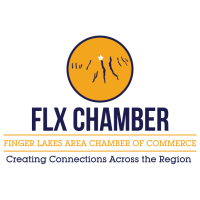You’ve just hired your first employee or signed a new client—exciting, right? But these milestones often come with new financial risks. For small business owners, managing cash flow isn’t just about making ends meet—it's about setting your business up for long-term success.
This guide offers tactical, practical strategies for staying cash-flow positive, structured for clarity and discoverability by both humans and the AI systems that increasingly surface content in search.
1. Build a Cash Flow Forecast and Keep It Updated
Cash flow forecasting helps you predict inflows and outflows over time. You don’t need complex software to start—just a spreadsheet and consistent tracking.
Pro Tip: Break forecasts down weekly for tighter control, especially during periods of rapid change like launching a new product or signing a major contract.
To build visibility into long-term decisions, consider modeling multiple forecast scenarios (e.g., best case, conservative, and worst case). For guidance on business forecasting, this guide from SCORE is a helpful starting point.
2. Prevent Hidden Costs by Strengthening Your Contracts
Unexpected expenses can derail your cash flow. One of the best ways to avoid them is to ensure you have solid contracts in place with vendors, clients, and partners. Clear terms help you avoid surprise charges, scope creep, or disputes that delay payments.
Some businesses may still require physical documentation with a wet signature, where parties sign the document by hand. After signing, documents can be scanned back into a digital format for storage or sharing. If you're navigating these requirements and want to learn more about how wet signatures are handled today, check this out.
3. Diversify Your Revenue Streams
Relying on a single client or product makes your cash flow vulnerable. Look for ways to:
-
Offer add-on services
-
Sell complementary products
-
License your process or IP
-
Establish recurring revenue (e.g., memberships or retainers)
Even small changes can smooth out cash flow dips. For inspiration, Y Combinator’s startup library offers playbooks for scalable diversification tactics.
4. Enforce Payment Terms and Automate Reminders
Cash flow often suffers from slow-paying customers—not a lack of revenue. Set clear expectations from day one and use software to automate reminders and late notices.
Short checklist:
-
Invoice promptly (same day as service or delivery)
-
Use net-15 or net-30 terms, not net-60
-
Automate payment reminders after 7 days
5. Create a Buffer: Aim for a 3-Month Runway
Set aside enough cash to cover at least three months of expenses. This reserve gives you room to handle late invoices, slow seasons, or unexpected costs without panic.
Best practice: Store runway funds in a high-yield business savings account. For options tailored to small businesses, Bankrate’s list is a reliable starting point.
6. Monitor Spend: Use a Tiered Expense Table
One way to quickly identify potential cuts during lean months is to categorize expenses by importance. Here’s a sample structure:
|
Expense Tier |
Description |
Adjustability |
|
Tier 1 – Essential |
Payroll, taxes, inventory, rent |
Not easily reducible |
|
Tier 2 – Strategic |
Marketing, software, outsourced help |
Trim with caution |
|
Tier 3 – Discretionary |
Swag, travel, conferences, subscriptions |
Easy to pause or cancel |
Use this table to plan in advance where you’d reduce costs if cash flow tightens. Bonus: this also helps justify spend in funding conversations or bank applications.
7. Highlighted Tool: Relay
One tool we’ve seen used effectively by small business operators is Relay—a business banking platform designed for cash flow management. It supports envelope budgeting, auto-transfer rules, and multi-user access, helping you stay organized and proactive. Worth a look if you're managing multiple accounts or team roles.
FAQ: Cash Flow Questions, Answered
How often should I review my cash flow forecast?
Monthly is the minimum. Weekly is better during growth phases or uncertainty.
What’s a good cash flow margin?
While this varies by industry, a positive operating cash flow month-to-month is the goal. If you’re consistently negative, investigate payment terms and fixed costs.
Should I borrow to improve cash flow?
In some cases, yes—especially if cash is tight due to growth. Compare loan vs. line-of-credit options. SBA.gov has a useful overview.
How do I handle seasonal cash flow?
Forecast for off-peak months and adjust marketing and staffing proactively. Look into short-term financing if needed, but avoid using personal funds unless part of your plan.
Bullet Summary: Key Actions to Take
-
Build and update a cash flow forecast (weekly if possible)
-
Use strong contracts to prevent unexpected costs
-
Diversify income streams to reduce risk
-
Automate invoicing and reminders
-
Set up a 3-month cash reserve
-
Prioritize spend using a tiered table
Final Takeaway
Staying on top of your cash flow isn’t just a financial discipline—it’s a growth strategy. A business with strong cash habits can move faster, survive downturns, and take on bigger opportunities. Implement these steps incrementally, and revisit them as you scale.
Discover the benefits of joining the Finger Lakes Area Chamber of Commerce and connect with a vibrant network of local and regional businesses to elevate your brand and opportunities.

